- Published on
How to Install Ubuntu With Dual Boot Easy Step Wise Guide
- Authors
- Name
Here is the easy step-wise installation guide to install Ubuntu along side with your Windows (dual boot)
Step 1: Make sure you have free, unallocated space
Open your Windows, right click on your 'Computer', click on 'Manage', Click on 'Disk Management'
Here you shall see the current partitions of hard disk. Your computer allows at max of 4 primary partitions only. So make sure that you have no more than 2 partitions (as Windiows creates a reserved partition known as 'System Reserved', and we will install Ubuntu in the fourth one).
In case you have 3 or more partitions, transfer all files from one partition to another and delete that partition. For eg. , Transfer all files from your E:// Drive to D:// drive, and in the 'Disk Management', right click on the partition corresponding to E:// drive and delete that partition. (such that you only have C:// and D:// drive in your Computer (and you will also see System Reserved in Disk Managament. So total 3 primary partitions))
[Note: If you have any important files on your PC, you must always back up your data in the proper drive or on another device /drive is possible. You are responsible for any changes being made on the computer, and always read the instructions carefully]
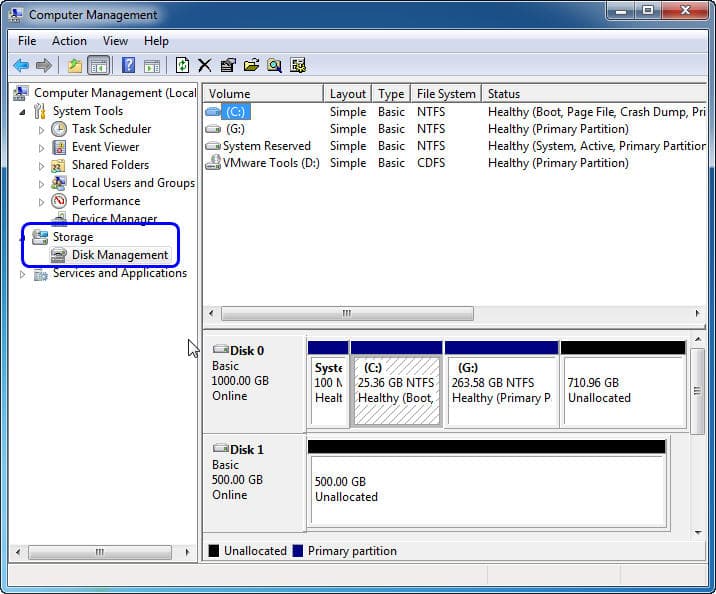
The removed space is shown in black as 'Unallocated Space', where we'll install Ubuntu.
(You can also shrink other volumes to create unallocated space, as required. I recommend at least 60 gb of space for Ubuntu, depending upon the type of work you will be doing.)
Step 2: Download Ubuntu and make a bootable device
Download the latest version of Ubuntu from here
Now, a bootable pen drive is to be made using the downloaded .iso file. Download the software Universal USB Installer, and follow its instructions to do so.
(Or you can also use Rufus)
Step 3: Boot the pen drive
Restart your computer and press the Boot Menu Key, to open boot options when the display starts. (Usually it's F12 key)
Select the Pen Drive to boot from it.
When Ubuntu loads, select the option 'Install Ubuntu' and follow the instructions. Connect to the internet if possibe, and check on 'Install Updates while installing' and 'Install Third Party Software'
Step 4: Creating Partitions for Ubuntu
When it asks for the type of installation, select 'Something else'.
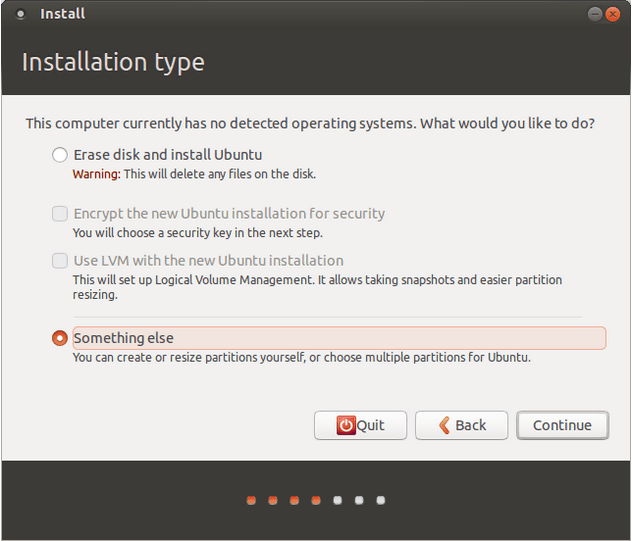
Now you would see the partitions of your disk as:
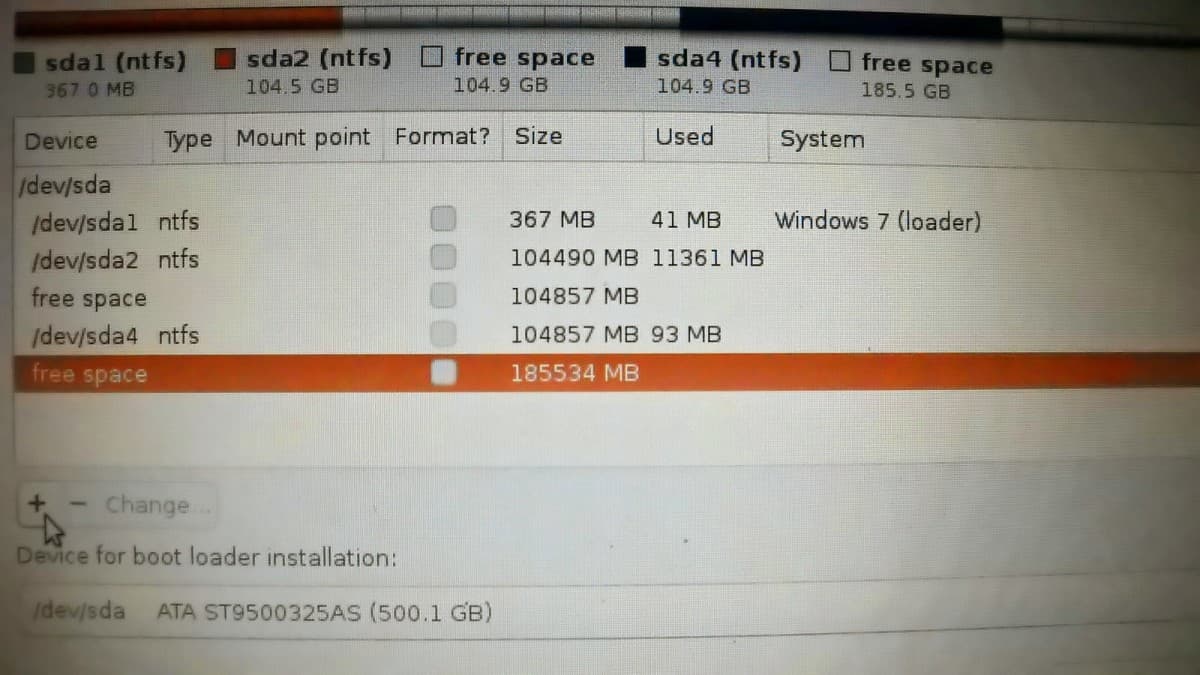
In this image, sda1, sda2 and sda4 are the current partitions of the disk, and free space is the unallocated space.
(If you see unusable space instead of free space, that means your computer already has 4 primary partitions, and you will need to delete one of the partition. Partition could be deleted from here also by selecting that partition and clicking on the minus '-' sign below (but data in that drive will be lost. Therefore, open windows, back up your data, and delete partition from there) )
Select the free space, click on '+' to create a partition for the root folder as:
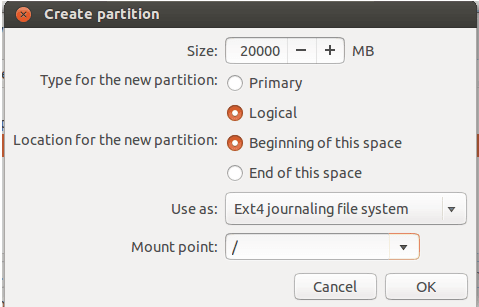
Here, 20gb is being allocated for your workspace in Ubuntu. I recommend around 50-100 GB (depending on the work you will be doing.)
Select free space and Click on '+' again to create 'Swap Area' as:
If you have less than 4GB of RAM, select the size of swap area equal to your RAM, else select 4GB. Since I have 4GB RAM, I'll select 4096 MB for Swap Area
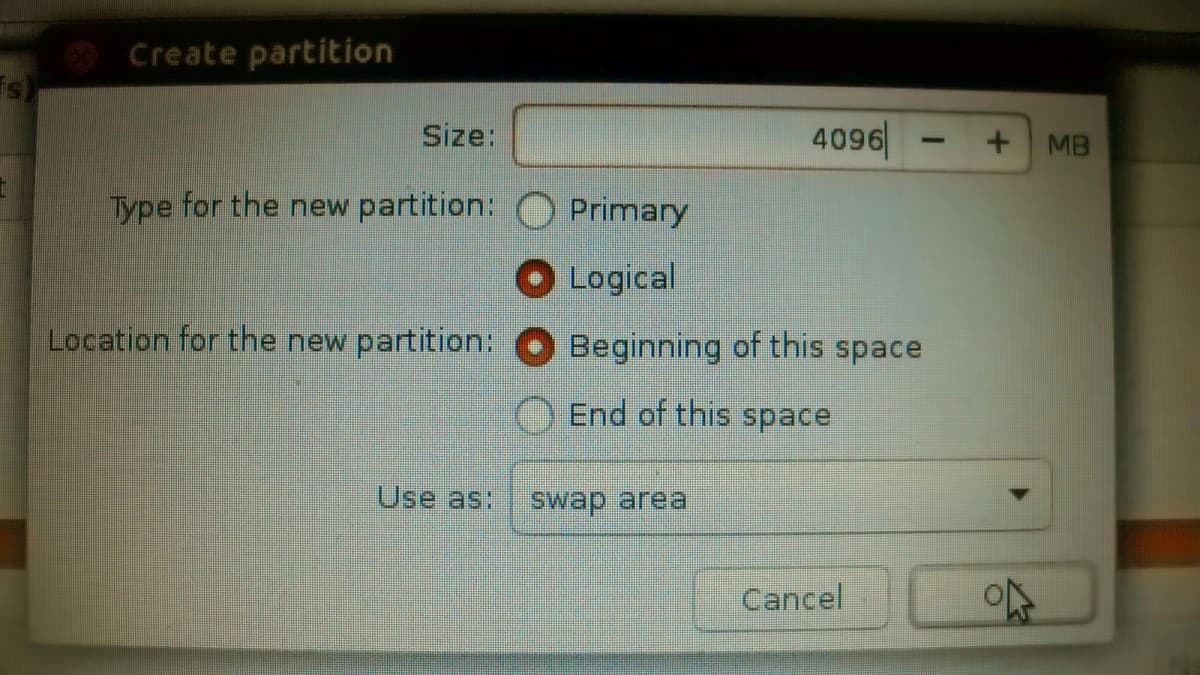
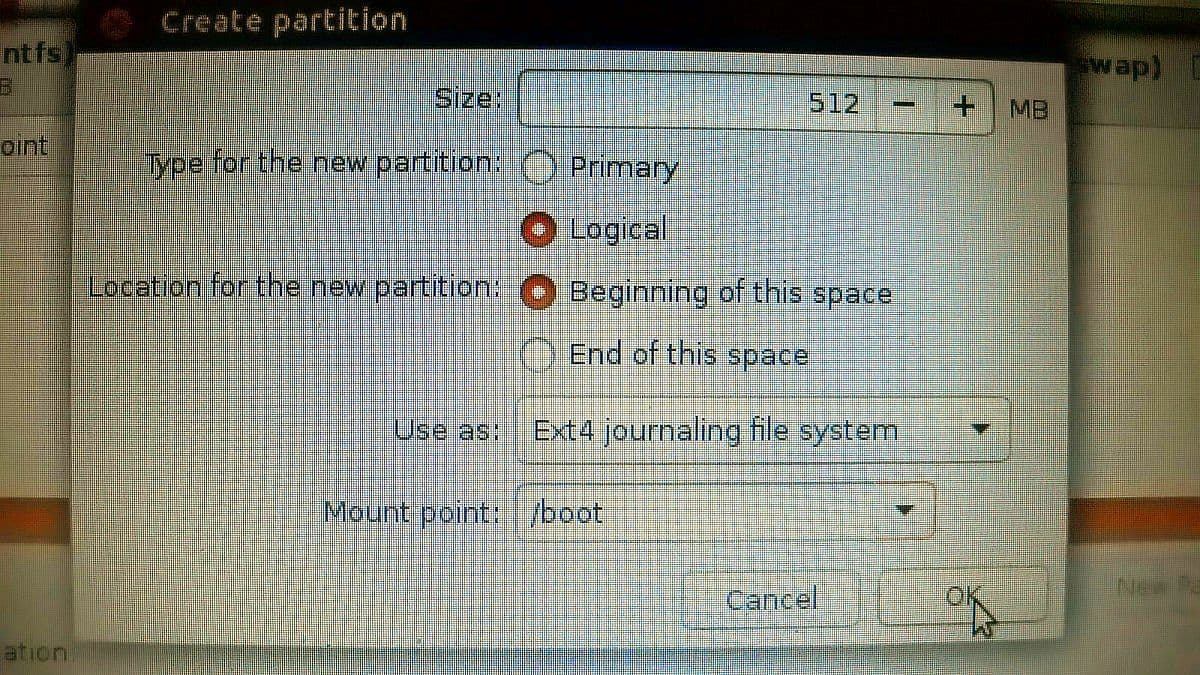
Now you have successfully created your partitions. The root directory '/' is where Ubuntu will be installed, and where you will save your files. Proceed and Confirm 'Write Changes to Disk'.
Follow rest of the instructions to fill up your basic details, and continue with the installation. You will see the installation bar which takes a few minutes, and later will ask you to restart your computer.
Step 5: Installation Complete
When installation completes and the computer restarts, you will be asked to select an OS to boot.
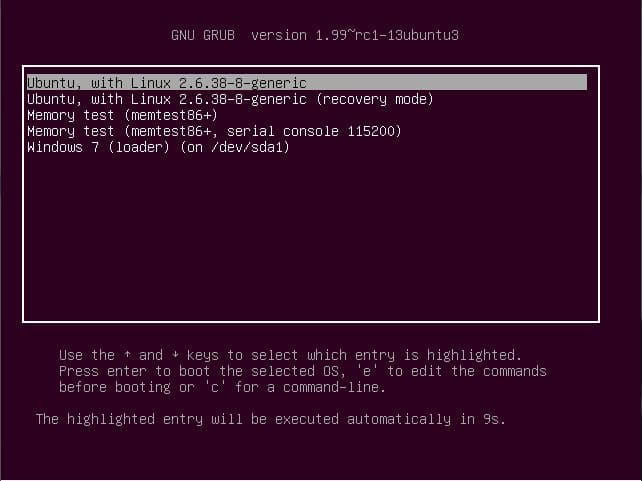
The first option will launch Ubuntu. The last Windows loader option will launch you Windows, like it used to before.
So I hope this tutorial was helpful to you, and you could install Ubuntu without any trouble.
Comment here if you still have any doubts or problems, or for your feedback.